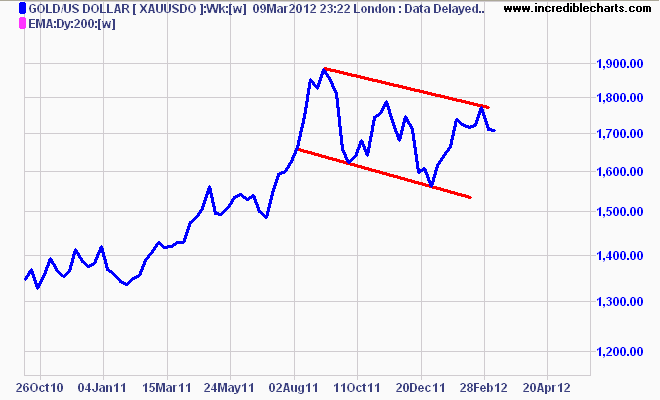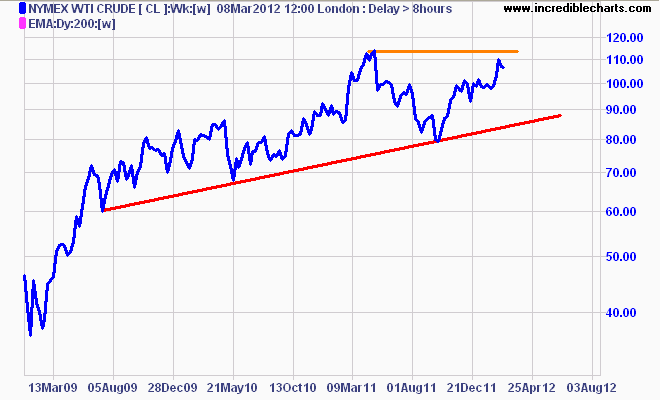
So where have the markets gone this week? Past the daily noise and headlines, this weekly post will examine the major markets (debt, commodities and currencies) before analysing the Australian stock market.
First the wrap-up from Friday’s night session on European and American markets:
The soft default in Greek debt – amounting to about $3 billion – and the consensus thinking that “all is well” caused most risk markets to rise first in Europe, with UK FTSE up 0.5% to 5887, the German DAX slightly higher, up 0.6% to 6880 points. Both bourses remain below their respective resistance levels for now.
The Euro (EUR/USD) lost over 1% against the USD to be at 1.312, as all major currencies – except the Swissie and the Loonie – and gold – fell against the reserve currency, the USD Index 1% higher to 80 points. The AUD lost 0.6% to be at 1.057 against the USD.
On the other side of the Atlantic, the US bourses mildly followed Europe, with the S&P500 up 0.3% to 1370 points as the Dow Jones Industrial Average finished flat, unable to breach the elusive 13000 point barrier again.
On to the important debt markets, where US 10 year T-Notes were sold off, yields lifting above 2% to 2.03%, with German bonds (bunds) flat to 1.79% yield. For reference, Aussie 10 year bonds were sold off, yields rising to 4.03% – getting closer to the cash rate.
To commodities, where energies gained, WTI crude up slightly to $106.5USD a barrel, whilst Brent crude jumped over $2 to $125.7USD per barrel.
Strangely, Gold (in USD) actually appreciated alongside the USD, up about $14 to $1713USD an ounce.
Weekly Analysis
US Dollar Index (DXY) – contrary to popular opinion the “paper” currency of the world is in a cyclical bull market and has closed this week at resistance at 80 points. A break above this level is nominally bearish for risk-on assets like stocks and commodities.
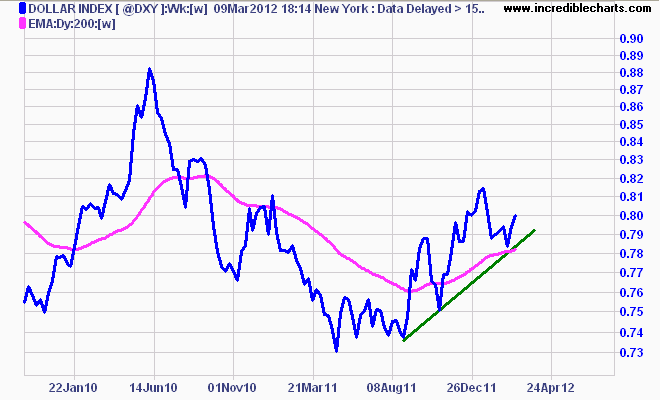
Euro (EUR/USD) – this week, with the Greek debt crisis “over”, lets look at the longer term graph: the Euro is oscillating around the 1.30 mark. A break above around 1.35 against the USD would confirm a bullish medium term move in risk.
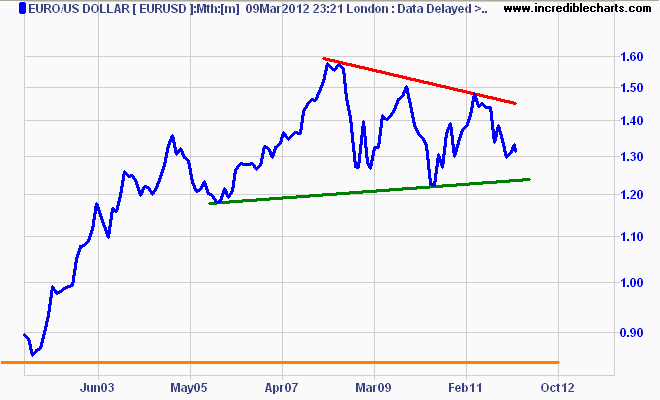
Aussie (AUD/USD) – the Aussie dollar had an interesting week, slipping below support at missed economic data whilst traversing the risks. A dip below support has not followed through as the commodity proxy continues to move sideways, with a bullish bias.
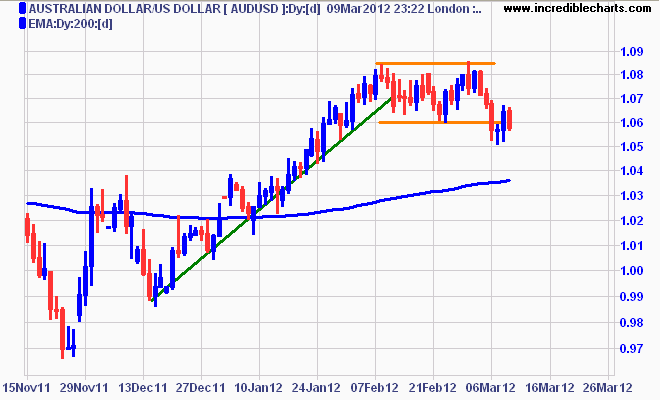
Gold (USD) – the shiny “currency”, after dipping below $1700USD an ounce, maintains a bullish flag on the weekly chart. A break above the upper boundary around $1800USD an ounce would likely continue the secular bull market in gold, with continued support around $1600USD an ounce. This pattern could morph into a sideways funk however, so it bears (sic) watching.
US 10 year T-Notes (TNX) – the daily chart shows bonds continue to be bid up to the 2% yield level (higher the bond price, lower the yield), as this “dangerous” asset continues to hold strength. A break above 2% would signify a change in investor sentiment and move to more riskier assets like stocks and commodities. Its a holding pattern for now.
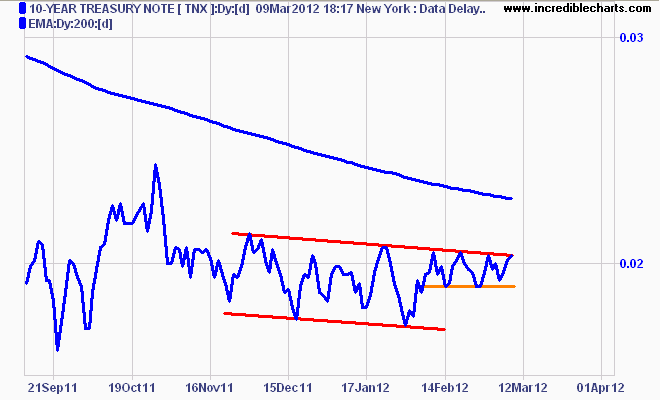
CRB Index – the commodities index, which for Aussie stock watchers resembles the ASX200 in magnitude, is trying to break free of resistance around the 330 point level after it followed other risk assets post-Xmas.
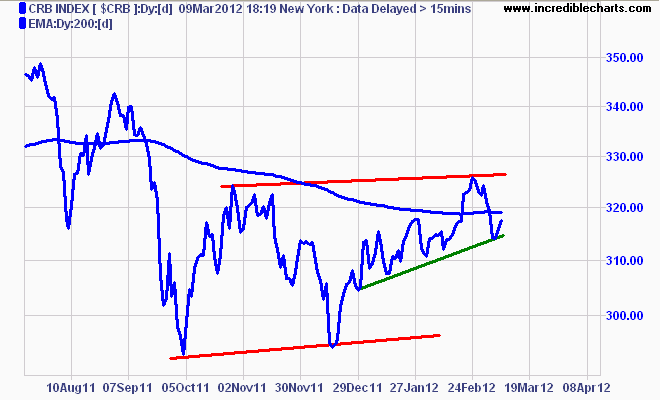
Crude (WTI and BRENT) – this hasn’t stopped crude oil resume its bullish path, with WTI maintaining above $100 a barrel this week, and the more important Brent, which did not suffer the same type of falls as its lighter, sweeter brother in the 2011 correction, also heading back to above $120 a barrel. From a macro-view its hard to be bullish on broader economic growth when energy prices remain so high and have the potential to go much much higher, particularly with oodles of liquidity swimming around world risk markets right now.
Volatility (VIX) – volatility is looking very benign again this week, as the chart shows it has decelerated markedly since late 2011, currently bottoming. This could be the calm before the storm, or just another “great moderation”.
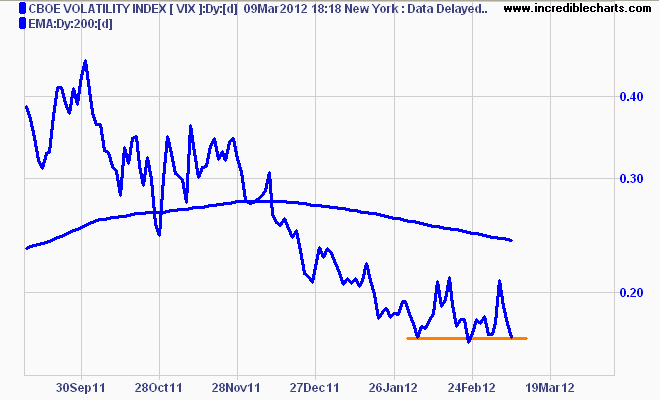
S&P500 – finally to stocks (you need to understand the above first, before looking at stocks or you have 1 eye closed…) I expected a retracement last week, but it was more of a dip then anything – a bear trap perhaps. Fundamentally, US stocks still remain not cheap, but not expensive either, with earnings growth going forward anaemic and profit margins unsustainably high:
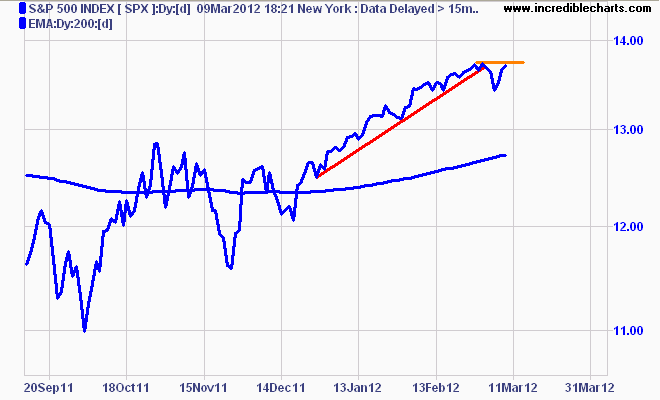
Shanghai Composite (SSEC) – this week saw a sideways shuffle of the bullish breakout of the SSEC’s medium term downtrend channel. It is now hitting resistance at its 200 day moving average, so this could be a bull trap as China’s economy continues to move to slower, sustainable growth.
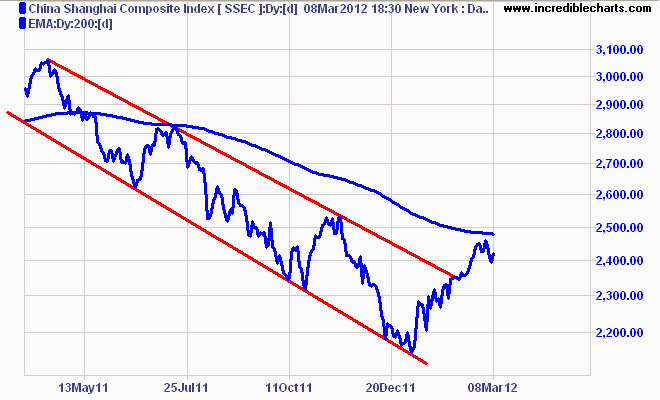
Nikkei 225 (N225) – in contrast, Japan’s major bourse is bursting with bravado. I still expect a heady retracement, but would not discount a continued boom as the BoJ wants to create inflation in the domestic economy – this is usually good for stocks. Just don’t look at the long term chart if you’re bullish…
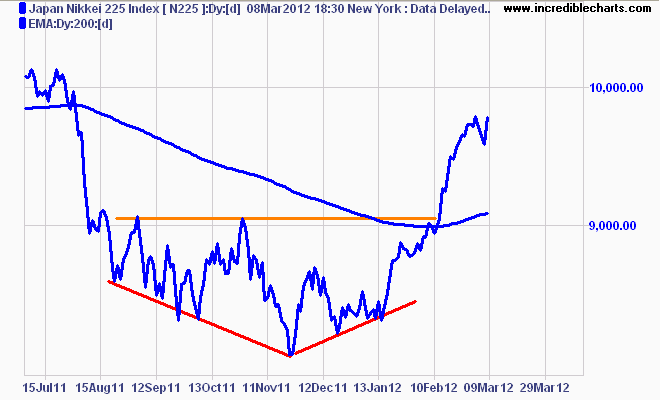
S&P/ASX200 (XJO) – finally to our local bourse. On the daily chart, it still looks anaemic. The market needs to break 4300 points firmly, or it will stay in this sideways funk for awhile.
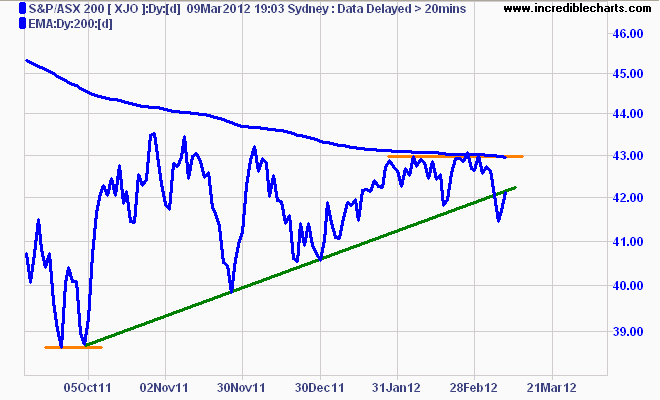
On my monthly chart study, the ASX200 remains in a secular bear market, but wants to have a cyclical bull market, moving up into the 4300-5000 point trading range. My target for any breakout would be around the midpoint (with possibly intraday higher) of around 4700 points, before settling down into the secular bear market trend again as the Australian economy continues to under perform its long running trend.
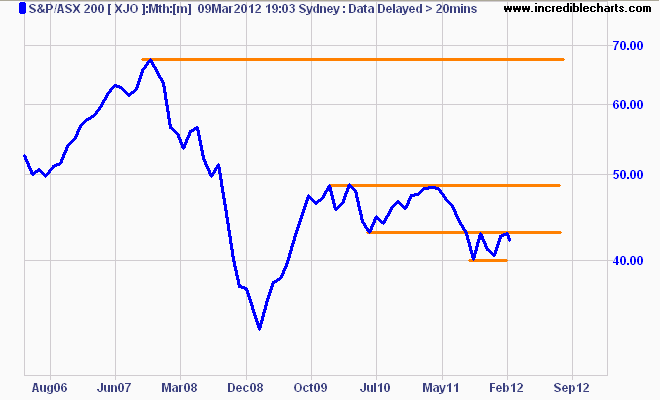
The SPI Futures are pointing to a slightly higher open for the ASX200 on Monday, up around 10 points to the 4215 level.
Enjoy your weekend and thanks for reading.
Disclaimer: The content on this blog should not be taken as investment advice. All site content, including advertisements, shall not be construed as a recommendation, no matter how much it seems to make sense, to buy or sell any security or financial instrument, or to participate in any particular trading or investment strategy. The authors have no position in any company or advertiser reference unless explicitly specified. Any action that you take as a result of information, analysis, or advertisement on this site is ultimately your responsibility. Consult someone who claims to have a qualification before making any investment decisions.
